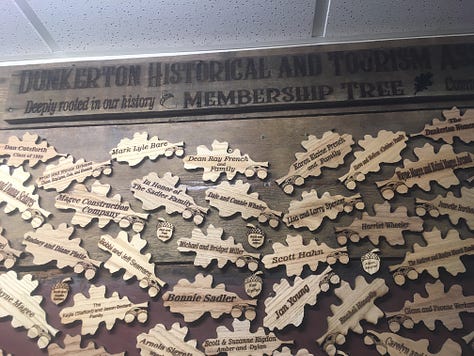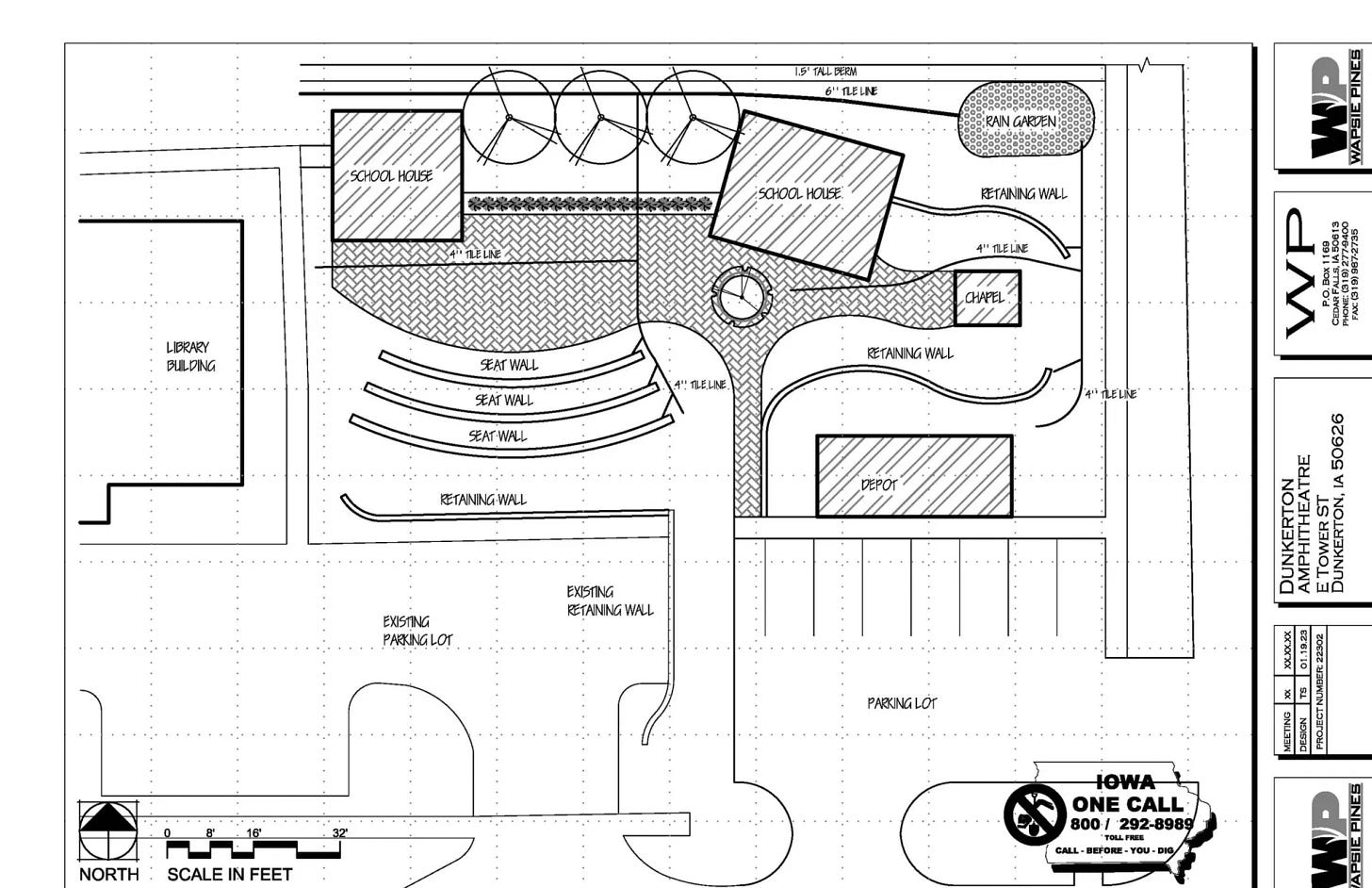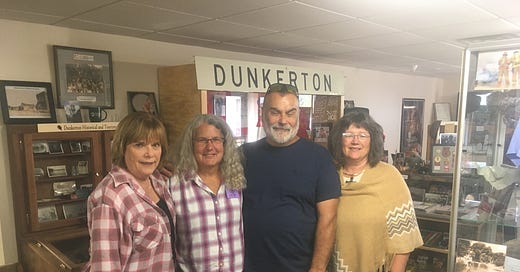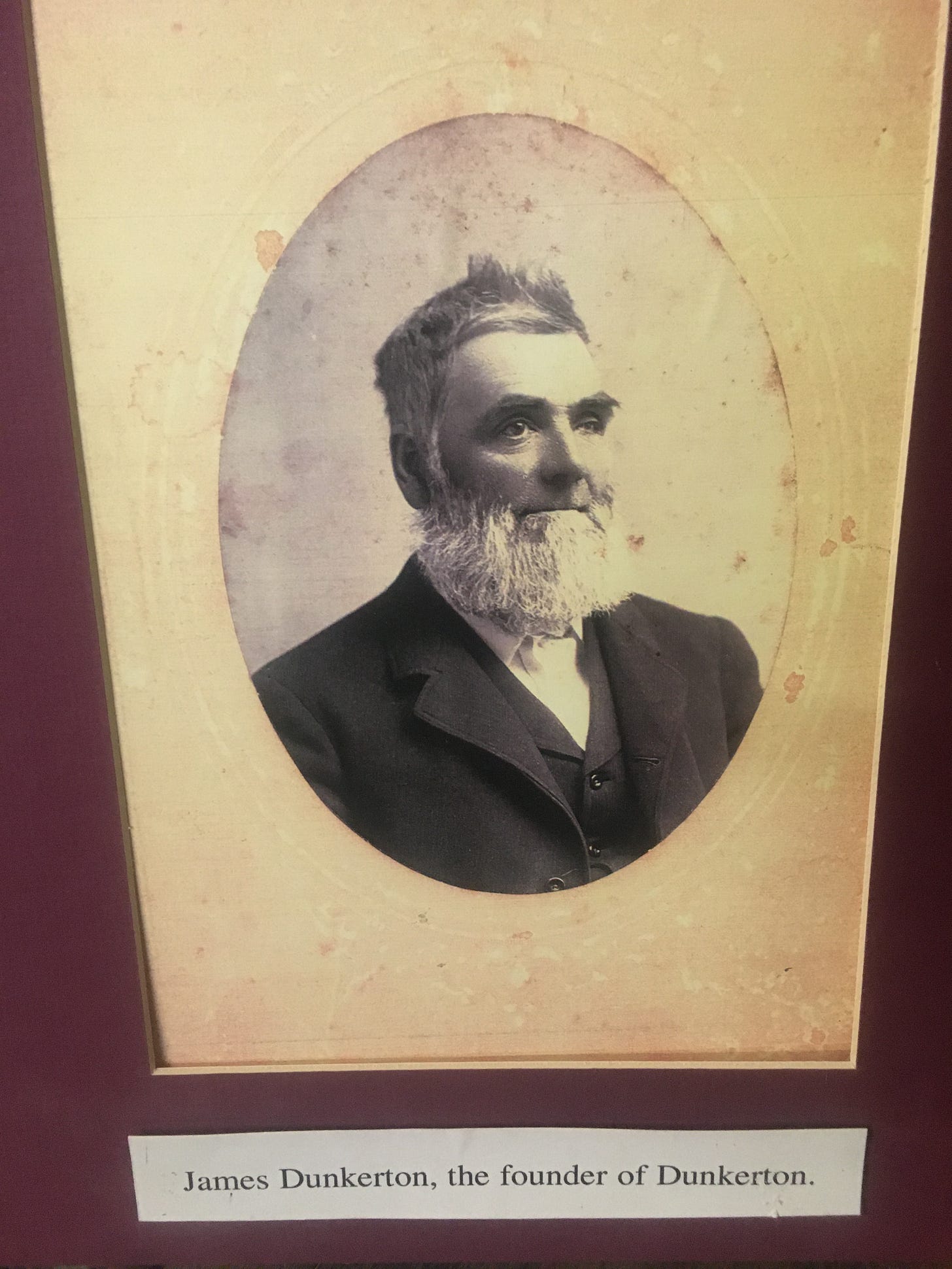Living history in Dunkerton
Volunteers creating museum "village" of one-room schools, amphitheater, and more

DUNKERTON — I have an ancestor who occupies perhaps an infamous footnote in the long and vibrant history of the fair city of Dunkerton.
Family lore has it that my maternal grandfather was kicked out of town for bootlegging some 90-plus years ago.
According to my uncle, the sheriff told my grandfather, “I’m gonna have to arrest you. Tomorrow.”
That gave Grandpa Harry Gardner one day to leave the hospitality of Dunkerton behind him, to paraphrase actor Gene Hackman’s character in the Clint Eastwood movie “Unforgiven.”
In fact, Grandpa Harry didn’t stop ‘til he got to Luck, Wis., which is about 70 miles northeast of the Twin Cities and where my mom’s family lived for a time.
In contrast, this bootlegger’s grandson was warmly received on a trip back to Dunkerton recently, by some folks who live and breathe Dunkerton lore.
I found a cadre of volunteers working to preserve the city’s history - and, in boxing parlance, punching way above the town’s weight class to make it happen. And having fun doing it.
In just two years, the Dunkerton Historical & Tourism Association, of which Teresa Stafford is director, has filled the lower level of the public library north of the high school, and has big expansion plans. With the help of community support, contributions in-kind and otherwise, a lot of sweat equity and a healthy bit of enthusiasm, they’re creating a historic campus within the city.

They’ve moved two one-room schoolhouses from surrounding Bennington Township into town. They want to add a chapel and a train depot. They’ve raised more than $330,000 in donations and have more than 200 individual donors and members. They even have plans to landscape the site, just east of the library, and create an outdoor amphitheater. And they have the museum collection online which is drawing additional interest.
What began in the summer of 2022 as a small project to collect artifacts in a “history room” of the library has collected momentum, beyond anyone’s initial expectations, in a relatively short amount of time. The current volunteers picked up the baton from an earlier attempt a decade or so ago by those of a previous generation and ran with it. Those earlier efforts also were slowed by water issues within the lower level of the library building, which since have been addressed.
“The cosmic forces have aligned,” quipped Dennis Magee, a museum board member and a former newsroom colleague of mine at the Waterloo-Cedar Falls Courier. He’s helping compile some of the town’s later history. He’s one of Stafford’s recruits. She was drawn into the project because she was already working on history of the local Woman’s Club and is generally credited with pulling the board together. Magee’s sister, Julie Heiple, recently retired from information technology work at the University of Northern Iowa, is the museum archivist.



The group gathered so much momentum that director Stafford and board members made a presentation in June at the Country School Association of America at the University of Toledo in Ohio and hosted a state one-room school conference earlier this month.
It’s an auspicious start for folks in a town of just under 850 people, founded in 1886 when farmer James Dunkerton allowed the railroad to cross his farm if a depot were built there. The town’s nestled on Crane Creek in the northeast corner of Black Hawk County, about a half hour drive from Waterloo. It and La Porte City, population 2,300, are the only two free-standing towns completely in the county which are not contiguous to the Waterloo-Cedar Falls metro area.
But interest has extended beyond the current townsfolk, Magee said. “Most of Dunkerton doesn’t live in Dunkerton anymore. We have maybe 13,000 names in the online (museum) system connected to Dunkerton.”
“Everything’s fallen into place,” Magee said. “Now we’re building a village. We’ve gone from a small room in a basement to restoring buildings, moving buildings.” And they’ve received a substantial donation of seed money to buy land to put the buildings on.

LuAnn Chapman, the great-great granddaughter of town founder James Dunkerton. said she’d seen history-preservation efforts in Grapevine, Texas, where she lived for a time. She was impressed by the local group here and became a significant donor to the project for a portion of the site.
Chapman dreamed that the same historic preservation momentum she’d seen and supported elsewhere could happen in Dunkerton. The museum “educational village” site is named for her grandmother, Queen Dunkerton Grinnell.
“This group of people that got together here formed an organization and followed every single practical way to make it happen right. It was an easy buy-in,” she said. It was “what we had always wanted.”
”If you’re into preservation, it doesn’t matter where you are, you want to maintain that history,” but need an “anchor, a space” to preserve that history, Chapman said. “To be able to provide that is huge. And they’ve done such a brilliant job. They did absolutely everything right. They took suggestions” and “figured out how to make it all fit.”
Two schoolhouses are already on site. Coming soon are a small chapel and railroad depot. The depot originally had been in the community of Lincoln in northern Tama County about 50 miles away, but had been privately acquired and moved to a site north of Dunkerton in 1975 to house antique sales.
Magee said the association has a fundraising goal of $475,000 to $500,000 with building restorations expected to take another two years to complete. More information may be obtained and contributions made at Dunkertonhistory.com.
According to its website, the association aspires to “enable present and future generations to learn about and maintain our unique heritage” thereby preserving its culture — and promoting the community.
Even to a bootlegger’s grandson.
Times change.
Pat Kinney is a freelance writer and former longtime news staffer with the Waterloo-Cedar Falls Courier and, prior to that, several years at the Ames Tribune. He is currently an oral historian with the Grout Museum District in Waterloo. His “View from the Cedar Valley” column is part of “Iowa Writers Collaborative,” a collection of news and opinion writers from around the state who previously and currently work with a host of Iowa newspapers, news organizations and other publications. They are listed below. Clink on the links to check them out, subscribe for free - and, if you believe in the value of quality journalism, support this column and/or any of theirs with a paid subscription .
The Iowa Writers’ Collaborative





Great story! There is nothing better than watching committed volunteers put words into action!
Thank you, Pat! Beautifully written!